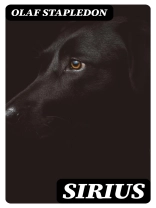Olaf Stapledon’s ‘Sirius’ is a groundbreaking work of speculative fiction that delves into the existential struggles of a genetically enhanced dog. Set against the backdrop of a post-World War I society grappling with technological advances and ethical dilemmas, the novel articulately blends philosophical themes with an innovative narrative style. Stapledon’s prose is both lyrical and introspective, layering rich imagery with profound meditations on consciousness, love, and the nature of being. The character of Sirius serves as a vehicle for exploring the boundaries between humanity and animality, inviting readers to reconsider their definitions of identity and intelligence in an increasingly mechanized world. Olaf Stapledon was an English writer and philosopher, known for his visionary approach to science fiction. His extensive background in philosophy led him to explore complex ethical and metaphysical questions in his fiction. Influenced by contemporary developments in psychology, biology, and technology, Stapledon’s work often reflects his desire to illuminate the larger component of human existence. ‘Sirius’ emerged during a transformative era marked by uncertainty, reflecting Stapledon’s own concerns about humanity’s future and its relationship to the other beings sharing the planet. ‘Sirius’ is a must-read for enthusiasts of speculative fiction and philosophical literature alike. Stapledon’s masterful storytelling and deep thematic exploration invite readers to embark on a thought-provoking journey that transcends simple anthropocentrism. In an age marked by questions of genetic modification and artificial intelligence, this text resonates powerfully, urging us to reflect on what it truly means to be sentient.
Circa l’autore
William Olaf Stapledon (1886–1950) was a visionary British philosopher and novelist, whose groundbreaking works have left an indelible imprint on science fiction literature. Stapledon’s interdisciplinary background in philosophy, history, and literature informed his speculative fiction, rendering it unique in both scope and depth. He is well-known for his philosophical exploration of the future of humanity and the universe, as well as his profound inquiry into the nature of consciousness and identity. One of his most poignant novels, ‘Sirius: A Fantasy of Love and Discord’ (1944), showcases Stapledon’s talent for exploring complex ideas through personal narratives. This book, a deeply moving tale about a bio-engineered dog with human-like intelligence, examines themes of alienation, the essence of being, and the relationship between humans and other sentient beings. Stapledon’s literary style is characterized by its epic scale, sweeping intellectual ambition, and the use of science fiction as a vehicle for examining existential and cosmic concerns. His seminal works, such as ‘Last and First Men’ (1930) and ‘Star Maker’ (1937), further cement his reputation as a pioneering figure in the genre, earning him recognition as a major influence on subsequent science fiction writers. Despite the scholarly nature of his writing, Stapledon’s books remain accessible and continue to resonate with readers who are intrigued by his imaginative visions of possible futures.












